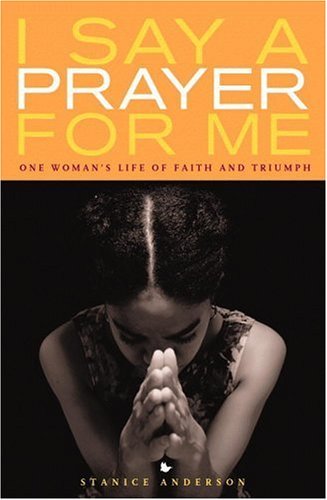
I Say a Prayer for Me: One Woman's Life of Faith and Triumph
Book Description
A quiet whisper of faith can shatter the loudest storms. In "I Say a Prayer for Me," Stanice Anderson unveils a gripping journey of resilience, weaving a tapestry of hope and redemption. Faced with heart-wrenching struggles and profound loss, one woman discovers the power of prayer as her refuge and guide. Each page pulses with raw emotion, revealing how the unyielding spirit can triumph against life's harshest trials. With every twist, faith is tested and relationships hang in the balance. Can she rise from the ashes to embrace the life she was destined to lead?
Quick Book Summary
In "I Say a Prayer for Me," Stanice Anderson delivers a raw and uplifting memoir chronicling her journey through adversity, addiction, and heartache toward a life rooted in faith and redemption. Drawing on poignant personal stories, Anderson navigates the depths of grief, the pain of fractured relationships, and the struggles of self-doubt. Against all odds, prayer becomes her constant companion—a lifeline connecting her to hope and inner strength. Through each trial, Anderson discovers that faith can illuminate the darkest moments. Her transformation is a testament to resilience and the power of spirituality in healing deep wounds. Ultimately, her story invites readers to believe in the possibility of renewal, no matter how daunting the circumstances.
Summary of Key Ideas
Table of Contents
Resilience in the Face of Adversity
Stanice Anderson’s memoir opens with a candid portrayal of her early life, marked by struggle and uncertainty. Growing up amidst challenges and losses, Anderson faces emotional turmoil that shapes her worldview. She exposes readers to pain from broken family bonds, mounting trauma, and the sense of being lost in a world that often feels indifferent. These formative experiences seed both vulnerability and a burgeoning hope—a quiet yearning for something stable and healing, which eventually guides her towards seeking comfort in faith and prayer.
The Transformative Power of Prayer
As Anderson confronts her darkest moments—including addiction, heartbreak, and betrayal—she experiences the profound weight of grief and despair. The narrative does not shy away from the rawness of relapse and the depths one can sink into when struggling with self-worth. However, each anguish is met with an honest reflection on her flaws and mistakes, offering insight into how wrestling with pain can be transformative. Through these lows, Anderson demonstrates a relentless drive to rise above her circumstances, learning to forgive herself in the process.
Navigating Grief and Loss
Prayer emerges as a defining motif throughout the memoir. It serves not only as a practice, but as a lifeline that reconnects Anderson to herself and her spiritual beliefs. Moments of quiet reflection and fervent supplication become critical turning points. Through prayer, she realigns her priorities, finds guidance, and gathers courage to make pivotal decisions. The book illustrates prayer’s versatility—sometimes a desperate plea for help, sometimes a whispered gratitude—and how it gradually roots her life in hope rather than fear.
Redefining Relationships Through Faith
Relationships sit at the heart of Anderson’s journey, both as sources of pain and healing. She chronicles the complexities of bonds with family, friends, and romantic partners, highlighting how faith begins to inform her approach to connection and forgiveness. As she grows, Anderson learns to communicate openly, establish boundaries, and eventually patch together trust fractured by past wounds. The impact of faith reshapes her interactions, moving her from isolation to belonging and support.
Embracing Personal Redemption
Emerging from her tribulations, Anderson’s memoir closes with a celebration of redemption and renewed purpose. By leaning into faith and embracing vulnerability, she reclaims agency over her life’s direction. The transformation is gradual and imperfect, but steadfast. Anderson’s story is ultimately a beacon for others facing adversity—affirming that, with unwavering faith and self-compassion, even the deepest scars can become symbols of hope and triumph.
Download This Summary
Get a free PDF of this summary instantly — no email required.





